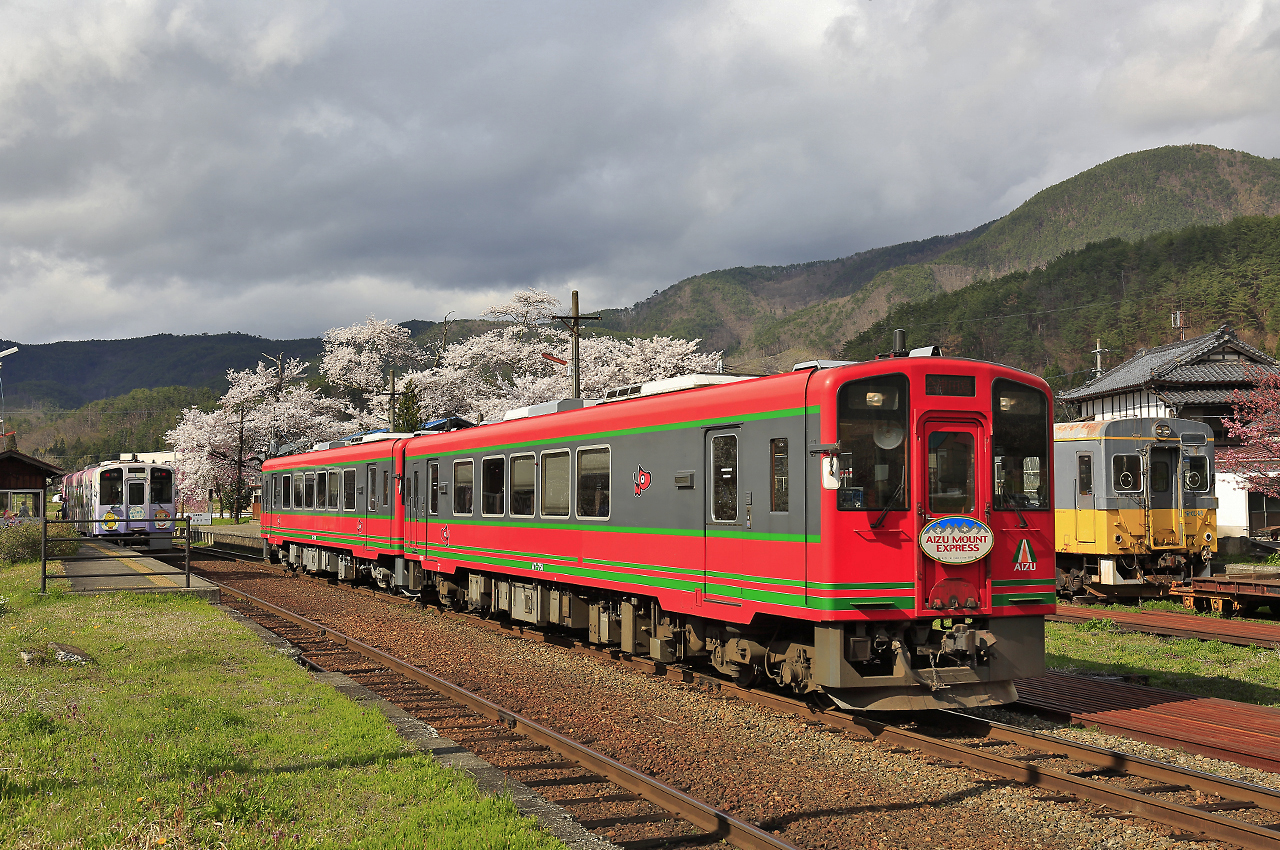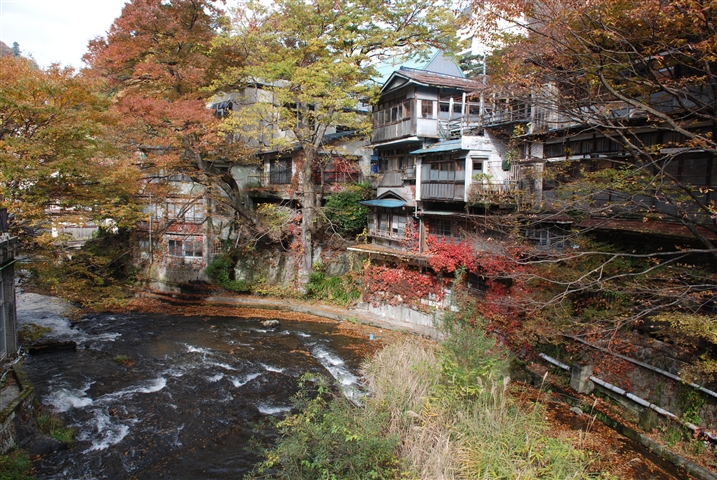|
Amaya Station
is a railway station on the Aizu Railway Aizu Line in the city of Aizuwakamatsu, Fukushima Prefecture, Japan, operated by the Aizu Railway.. Lines Amaya Station is served by the Aizu Line, and is located 7.8 rail kilometers from the official starting point of the line at . Station layout Amaya Station has one side platform serving a single bi-directional track. There is no station building, but only a shelter by the platform. The station is unattended. Adjacent stations History Amaya Station opened on October 7, 1999. Surrounding area * See also * List of railway stations in Japan The links below contain all of the 8579 railway stations in Japan. External links {{Portal bar, Japan, Trains * Railway stations Japan Japan ( ja, 日本, or , and formally , ''Nihonkoku'') is an island country in East Asia. It ... External links Aizu Railway Station information Railway stations in Fukushima Prefecture Aizu Line Railway stations in Japan opene ... [...More Info...] [...Related Items...] OR: [Wikipedia] [Google] [Baidu] |
Aizu Tetsudo Logo 1
is the westernmost of the three regions of Fukushima Prefecture, Japan, the other two regions being Nakadōri in the central area of the prefecture and Hamadōri in the east. As of October 1, 2010, it had a population of 291,838. The principal city of the area is Aizuwakamatsu. It was part of Mutsu Province; the area once was part of Iwase Province created during the reign of Empress Genshō.Meyners d'Estrey, Guillaume Henry Jean (1884). ; excerpt, '' Genshō crée sept provinces : Idzumi, Noto, Atoa, Iwaki, Iwase, Suwa et Sado en empiétant sur celles de Kawachi, Echizen, Etchū, Kazusa, Mutsu and Shinano'' The ''Yōrō Ritsuryo'' established the Iwase Province in 718 through the division of the Michinoku Province (Mutsu Province). It was composed of five districts of Shirakawa (白河), Iwase (石背), Aizu (会津), Asaka (安積) and Shinobu (信夫). The area encompassed by the province reverted to Mutsu some time between 722 and 724. During the Edo period ... [...More Info...] [...Related Items...] OR: [Wikipedia] [Google] [Baidu] |
Aizu Railway
, is a third-sector Japanese railway company whose major shareholders include the Fukushima prefectural and Aizuwakamatsu city governments. It owns and operates its only line, the Aizu Railway Aizu Line. The names of the company and the line are from the Aizu area of Fukushima Prefecture that the line serves. History * June 22, 1984 - The Aizu line is opened by Japanese National Railways. * November 10, 1986 - Aizu Railway Co., Ltd. is established. * 1987: ** -Route name, new station name, company badge, etc. are determined. ** July 16 - East Japan Railway (JR East) to convert the Aizu line Aizusen opening . * April 27, 1988 - To-no-Hetsuri Station opens. * October 12, 1990 - 15.4 km of the line is electrified, between and . With this electrification, through services begin with the Tobu Kinugawa Line, Tobu Nikko Line, and the Tobu Isesaki Line. * August 10, 1995 - Minami-Wakamatsu Station opens. * August 7, 1999 - Amaya Station was opened. * July 18, 2001 - Aizu-Sanson ... [...More Info...] [...Related Items...] OR: [Wikipedia] [Google] [Baidu] |
Aizu Line
The is a long railway line from Nishi-Wakamatsu Station in Aizuwakamatsu to Aizukōgen-Ozeguchi Station in Minamiaizu, Fukushima, Japan. It is owned and operated by Aizu Railway. Services The train operation is controlled from Aizu-Tajima Station. The electrified southern part goes beyond the Aizukōgen-Ozeguchi terminus onto the Yagan Railway Aizu Kinugawa Line, Tobu Railway and JR East all the way to Tokyo. The non-electrified northern part runs a diesel service beyond Nishi-Wakamatsu Station to Aizu-Wakamatsu Station on the JR East Tadami Line. Stations * All stations are located in Fukushima Prefecture. * Local trains stop at all stations. * Stations stopped at by all trains are marked "●". * Stations stopped at by some of the trains are marked "◆". * Limited Express train Revaty Aizu which goes to and departs from Asakusa Station and does not stop at any stations on the Aizu Line except Aizu-Tajima and Aizukogen-Ozeguchi Station. *The service called Sightseeing R ... [...More Info...] [...Related Items...] OR: [Wikipedia] [Google] [Baidu] |
Aizu Railway Aizu Line
The is a long railway line from Nishi-Wakamatsu Station in Aizuwakamatsu to Aizukōgen-Ozeguchi Station in Minamiaizu, Fukushima, Japan. It is owned and operated by Aizu Railway. Services The train operation is controlled from Aizu-Tajima Station. The electrified southern part goes beyond the Aizukōgen-Ozeguchi terminus onto the Yagan Railway Aizu Kinugawa Line, Tobu Railway and JR East all the way to Tokyo. The non-electrified northern part runs a diesel service beyond Nishi-Wakamatsu Station to Aizu-Wakamatsu Station on the JR East Tadami Line. Stations * All stations are located in Fukushima Prefecture. * Local trains stop at all stations. * Stations stopped at by all trains are marked "●". * Stations stopped at by some of the trains are marked "◆". * Limited Express train Revaty Aizu which goes to and departs from Asakusa Station and does not stop at any stations on the Aizu Line except Aizu-Tajima and Aizukogen-Ozeguchi Station. *The service called Sightseeing R ... [...More Info...] [...Related Items...] OR: [Wikipedia] [Google] [Baidu] |
Aizuwakamatsu, Fukushima
is a city in Fukushima Prefecture, Japan. , the city had an estimated population of 118,159 in 50,365 households, and a population density of 310 persons per km2. The total area of the city was . Geography Aizuwakamatsu is located in the western part of Fukushima Prefecture, in the southeast part of Aizu basin. Mountains * Mount Ōtodake (1416 m) * Mount Seaburi * Mount Oda * Mount Iimori Rivers * Aga River * Nippashi River * Yugawa River * Sesenagi River Lakes * Lake Inawashiro * Lake Wakasato * Lake Higashiyama * Lake Sohara Hot springs * Higashiyama Onsen * Ashinomaki Onsen Administrative divisions There are 11 administrative divisions (hamlets or ) in the city. * Wakamatsu * Machikita * Kouya * Kouzashi * Monden * Ikki * Higashiyama * Ōto * Minato * Kitaaizu * Kawahigashi Neighboring municipalities Fukushima Prefecture *North: Kitakata, Aizubange, Yugawa, Bandai *East: Koriyama, Inawashiro *West: Aizumisato *South: Shimogo, Tenei Climate Aizuwakamats ... [...More Info...] [...Related Items...] OR: [Wikipedia] [Google] [Baidu] |
Fukushima Prefecture
Fukushima Prefecture (; ja, 福島県, Fukushima-ken, ) is a prefecture of Japan located in the Tōhoku region of Honshu. Fukushima Prefecture has a population of 1,810,286 () and has a geographic area of . Fukushima Prefecture borders Miyagi Prefecture and Yamagata Prefecture to the north, Niigata Prefecture to the west, Gunma Prefecture to the southwest, and Tochigi Prefecture and Ibaraki Prefecture to the south. Fukushima is the capital and Iwaki is the largest city of Fukushima Prefecture, with other major cities including Kōriyama, Aizuwakamatsu, and Sukagawa. Fukushima Prefecture is located on Japan's eastern Pacific coast at the southernmost part of the Tōhoku region, and is home to Lake Inawashiro, the fourth-largest lake in Japan. Fukushima Prefecture is the third-largest prefecture of Japan (after Hokkaido and Iwate Prefecture) and divided by mountain ranges into the three regions of Aizu, Nakadōri, and Hamadōri. History Prehistory The keyhole-shaped Ōy ... [...More Info...] [...Related Items...] OR: [Wikipedia] [Google] [Baidu] |
Side Platform
A side platform (also known as a marginal platform or a single-face platform) is a platform positioned to the side of one or more railway tracks or guideways at a railway station, tram stop, or transitway. A station having dual side platforms, one for each direction of travel, is the basic design used for double-track railway lines (as opposed to, for instance, the island platform where a single platform lies between the tracks). Side platforms may result in a wider overall footprint for the station compared with an island platform where a single width of platform can be shared by riders using either track. In some stations, the two side platforms are connected by a footbridge running above and over the tracks. While a pair of side platforms is often provided on a dual-track line, a single side platform is usually sufficient for a single-track line. Layout Where the station is close to a level crossing (grade crossing) the platforms may either be on the same side of the cross ... [...More Info...] [...Related Items...] OR: [Wikipedia] [Google] [Baidu] |
List Of Railway Stations In Japan ...
The links below contain all of the 8579 railway stations in Japan. External links {{Portal bar, Japan, Trains * Railway stations Japan Japan ( ja, 日本, or , and formally , ''Nihonkoku'') is an island country in East Asia. It is situated in the northwest Pacific Ocean, and is bordered on the west by the Sea of Japan, while extending from the Sea of Okhotsk in the north ... [...More Info...] [...Related Items...] OR: [Wikipedia] [Google] [Baidu] |
Railway Stations In Fukushima Prefecture
Rail transport (also known as train transport) is a means of transport that transfers passengers and goods on wheeled vehicles running on rails, which are incorporated in tracks. In contrast to road transport, where the vehicles run on a prepared flat surface, rail vehicles ( rolling stock) are directionally guided by the tracks on which they run. Tracks usually consist of steel rails, installed on sleepers (ties) set in ballast, on which the rolling stock, usually fitted with metal wheels, moves. Other variations are also possible, such as "slab track", in which the rails are fastened to a concrete foundation resting on a prepared subsurface. Rolling stock in a rail transport system generally encounters lower frictional resistance than rubber-tyred road vehicles, so passenger and freight cars (carriages and wagons) can be coupled into longer trains. The operation is carried out by a railway company, providing transport between train stations or freight customer faci ... [...More Info...] [...Related Items...] OR: [Wikipedia] [Google] [Baidu] |
Railway Stations In Japan Opened In 1999
Rail transport (also known as train transport) is a means of transport that transfers passengers and goods on wheeled vehicles running on rails, which are incorporated in tracks. In contrast to road transport, where the vehicles run on a prepared flat surface, rail vehicles (rolling stock) are directionally guided by the tracks on which they run. Tracks usually consist of steel rails, installed on sleepers (ties) set in ballast, on which the rolling stock, usually fitted with metal wheels, moves. Other variations are also possible, such as "slab track", in which the rails are fastened to a concrete foundation resting on a prepared subsurface. Rolling stock in a rail transport system generally encounters lower frictional resistance than rubber-tyred road vehicles, so passenger and freight cars (carriages and wagons) can be coupled into longer trains. The operation is carried out by a railway company, providing transport between train stations or freight customer facili ... [...More Info...] [...Related Items...] OR: [Wikipedia] [Google] [Baidu] |






